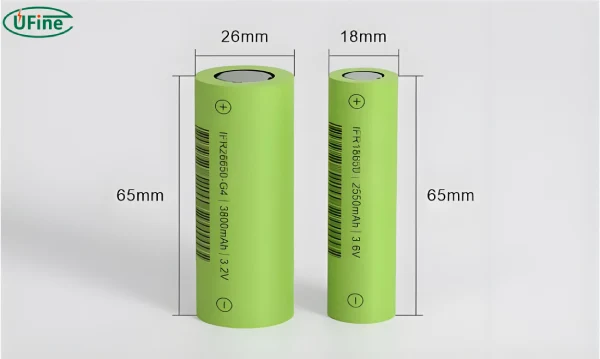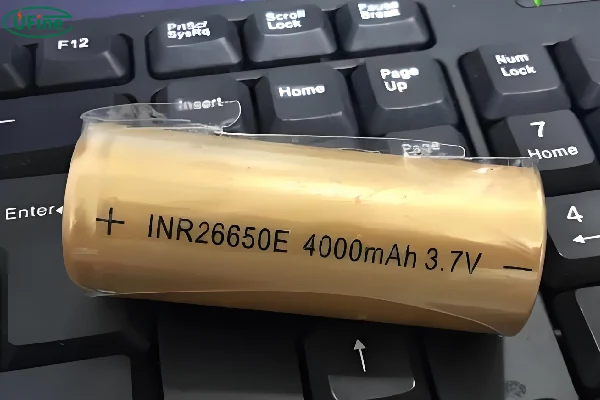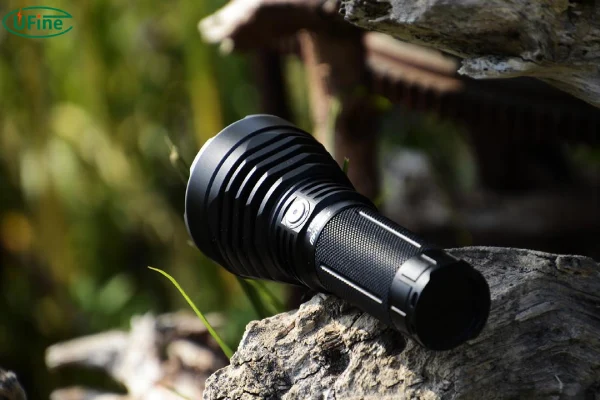
- Part 1. What is a 26650 rechargeable battery?
- Part 2. Advantages and disadvantages
- Part 3. 26650 rechargeable batteries types
- Part 4. Applications
- Part 5. Key parameters to consider when choosing a 26650 rechargeable battery
- Part 6. 26650 rechargeable battery brand
- Part 7. 26650 rechargeable battery
- Part 8. Conclusion
26650 rechargeable batteries are becoming increasingly popular for powering a wide range of devices, from flashlights and power tools to electric vehicles and energy storage systems. They offer high capacity, long lifespan, and reliable performance, making them a versatile and powerful energy source. This article will delve into the world of 26650 batteries, exploring their features, advantages, and applications, helping you understand why they are a top choice for many users.
Part 1. What is a 26650 rechargeable battery?
A 26650 rechargeable battery is a cylindrical lithium-ion battery with a diameter of 26 mm and a length of 65 mm. It’s named after its dimensions. These batteries are known for their high energy density, meaning they can store a lot of power in a relatively small space.
Chemistry: The Heart of the Battery
26650 batteries use lithium-ion chemistry, which is a common type of battery chemistry used in many electronic devices. Lithium-ion batteries use lithium ions to transfer energy between the anode and cathode, resulting in a high energy density and long lifespan.
Structure: Components Working Together
A 26650 battery is made up of several components, including:
- Anode: The negative electrode, usually made of graphite.
- Cathode: The positive electrode, usually made of lithium cobalt oxide (LCO), lithium manganese oxide (LMO), or lithium nickel manganese cobalt oxide (NMC).
- Separator: A thin membrane that separates the anode and cathode, preventing them from coming into contact.
- Electrolyte: A liquid or gel that allows lithium ions to move between the anode and cathode.
- Case: A cylindrical metal or plastic case that encloses the battery components.
Principle: The Flow of Energy
The basic principle of a 26650 battery involves the movement of lithium ions between the anode and cathode. During charging, lithium ions move from the cathode to the anode, storing energy. During discharge, lithium ions move from the anode to the cathode, releasing energy.
26650 vs 18650 Rechargeable Batteries: The Ultimate Guide
Part 2. Advantages and disadvantages
Like any technology, 26650 batteries have both advantages and disadvantages. It’s important to weigh these factors when deciding if they are the right choice for your needs.
Advantages:
- High Capacity: 26650 batteries offer a high energy density, meaning they can store a lot of power in a relatively small space. This makes them ideal for devices that require long runtime or high power output.
- Long Lifespan: Lithium-ion batteries have a longer lifespan than other types of batteries, such as lead-acid batteries. They can withstand many charge-discharge cycles without significant degradation.
- High Discharge Rate: 26650 batteries can deliver high currents, making them suitable for applications that require high power output, such as power tools and electric vehicles.
- Low Self-Discharge: Lithium-ion batteries have a low self-discharge rate, meaning they lose very little charge when not in use. This makes them ideal for devices that are stored for long periods.
- Wide Operating Temperature Range: 26650 batteries can operate over a wide temperature range, making them suitable for use in various environments.
Disadvantages:
- Cost: 26650 batteries are generally more expensive than other types of batteries, such as AA or AAA batteries.
- Safety Concerns: Lithium-ion batteries can be a fire hazard if not handled properly. They should be stored and used in accordance with manufacturer instructions.
- Limited Availability: 26650 batteries may not be as readily available as other types of batteries, especially in some regions.
Part 3. 26650 rechargeable batteries types
26650 batteries are available in various types, each with its own characteristics and applications. The most common types include:
- Lithium Cobalt Oxide (LCO): LCO batteries offer high energy density and high discharge rate but have a limited lifespan and can be susceptible to overheating.
- Lithium Manganese Oxide (LMO): LMO batteries offer good safety and thermal stability but have a lower energy density than LCO batteries.
- Lithium Nickel Manganese Cobalt Oxide (NMC): NMC batteries offer a good balance of energy density, power, and lifespan. They are a popular choice for electric vehicles and energy storage systems.
Part 4. Applications
26650 batteries are used in a wide range of applications, including:
- Flashlights and Headlamps: Their high capacity and long lifespan make them ideal for powering high-performance flashlights and headlamps.
- Power Tools: 26650 batteries are used in power tools, such as drills, saws, and grinders, providing the power needed for demanding tasks.
- Electric Vehicles: 26650 batteries are used in electric vehicles, providing the energy needed for long-range driving.
- Energy Storage Systems: 26650 batteries are used in home energy storage systems, providing backup power during outages and reducing reliance on the grid.
- Medical Devices: 26650 batteries are used in medical devices, such as portable ventilators and defibrillators, providing reliable power for critical applications.
Part 5. Key parameters to consider when choosing a 26650 rechargeable battery
When choosing a 26650 battery, several key parameters should be considered:
- Capacity (mAh): The capacity of a battery determines how much energy it can store. Higher capacity batteries provide longer runtime.
- Voltage (V): The voltage of a battery determines the amount of electrical potential it provides. Higher voltage batteries provide more power.
- Discharge Rate (C Rate): The discharge rate indicates how quickly a battery can deliver energy. Higher discharge rates are suitable for applications that require high power output.
- Cycle Life: The cycle life of a battery refers to the number of charge-discharge cycles it can withstand before its capacity significantly degrades.
- Internal Resistance: Lower internal resistance leads to better performance and less heat generation.
- Operating Temperature Range: The operating temperature range of a battery determines the temperatures at which it can safely operate.
- Safety Features: Safety features, such as overcharge protection, over-discharge protection, and short-circuit protection, are essential for ensuring safe operation.
- Dimensions: The dimensions of a battery are important for ensuring compatibility with the device it will be used in.
Part 6. 26650 rechargeable battery brand
Several reputable brands manufacture 26650 batteries. Some of the most popular brands include:
- Samsung: Samsung is a well-known brand for its high-quality lithium-ion batteries, including 26650 batteries.
- LG: LG is another leading manufacturer of lithium-ion batteries, offering a wide range of 26650 batteries for various applications.
- Panasonic: Panasonic is a renowned electronics company that also manufactures high-performance 26650 batteries.
- Sony: Sony is known for its innovative battery technologies, including 26650 batteries with high energy density and long lifespan.
- Molicel: Molicel is a relatively new brand that has gained popularity for its high-performance 26650 batteries, particularly in the vaping industry.
Part 7. 26650 rechargeable battery
Ufine Battery is a leading Chinese lithium battery manufacturer specializing in customizing lithium-ion batteries, lithium polymer batteries, 18650 batteries, LiFePO4 batteries, high temperature batteries, low temperature batteries, etc. They offer a wide range of battery sizes, capacities, and voltages to meet the diverse needs of their customers.
Part 8. Conclusion
26650 rechargeable batteries offer a powerful and reliable energy source for a wide range of applications. By understanding their features, advantages, and key parameters, you can choose the right 26650 battery for your specific needs. Whether you’re powering a flashlight, a power tool, or an electric vehicle, 26650 batteries offer a high-performance solution that can meet your energy demands.
Related Tags:
More Articles

Battery Load Test: A Comprehensive Guide
Step-by-step battery load test guide for car, solar & industrial use. Learn how to load test a battery, interpret voltage charts, and avoid common mistakes.
The Comprehensive Guide to Battery Balancing and Battery Balancer
Discover how battery balancers improve lithium battery performance, lifespan, and safety. Learn types, functions, and tips to choose the right balancer.
What Is the Best Voltage for a Chainsaw Battery?
Compare 12V-80V chainsaw batteries for light pruning, medium firewood, and professional cutting. See best battery chainsaw with runtime charts and safety tips.
Lithium VS. Alkaline Batteries: A Comprehensive Comparison
Lithium batteries last 3–7× longer than alkaline and perform better in cold weather. Compare lifespan, cost, safety, and best uses to choose the right battery.
Comparing Lithium-Sulfur and Lithium-Ion Batteries: Which is Right for You?
Compare lithium-sulfur (Li-S) and lithium-ion batteries on energy, lifespan, cost, safety, and applications. Best choice for drones, EVs, and electronics.





